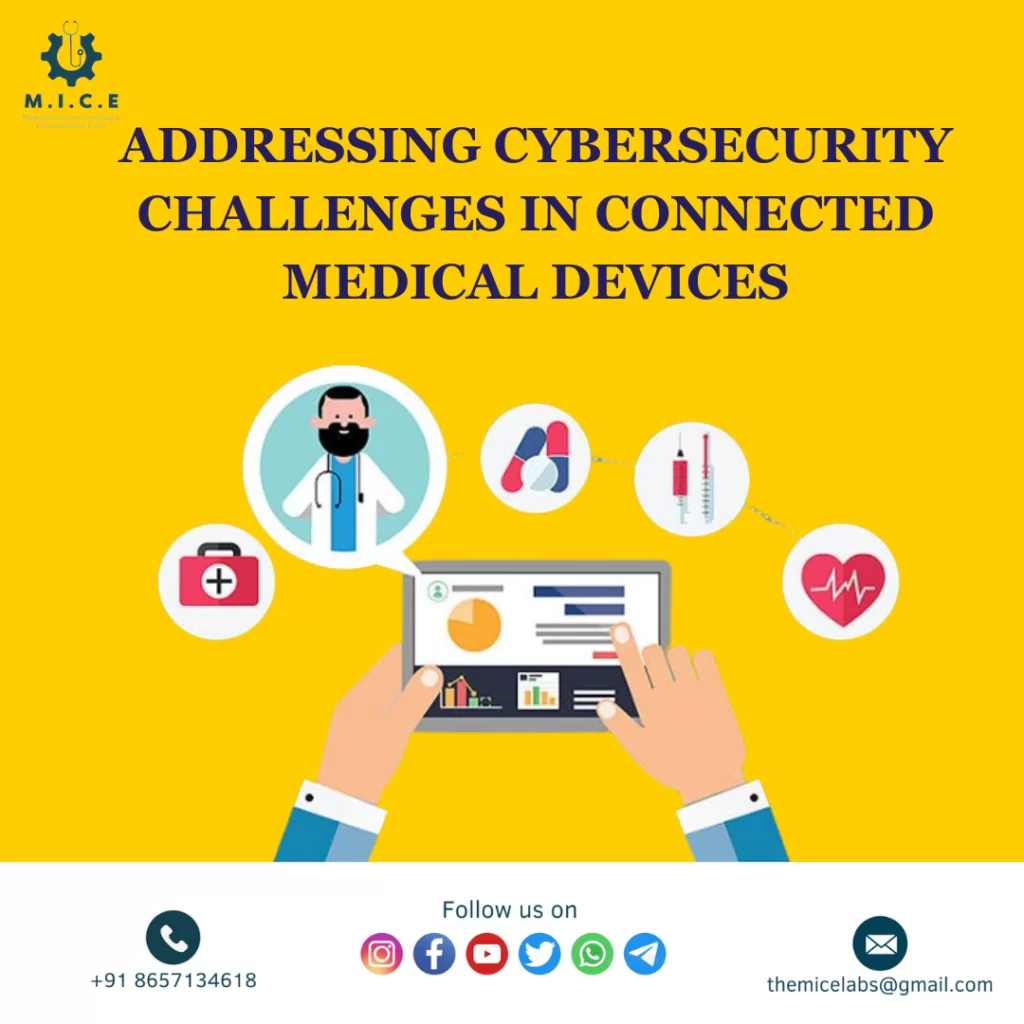In today’s digitally connected world, the integration of technology in healthcare has led to remarkable advancements, particularly in the realm of connected medical devices. From smart wearables to remote patient monitoring systems, these devices offer unprecedented benefits in terms of patient care, efficiency, and accessibility. However, along with these benefits come significant cybersecurity challenges that must be addressed to safeguard patient data, ensure device integrity, and mitigate potential risks.
The Importance of Cybersecurity in Connected Medical Devices: Connected medical devices, such as pacemakers, insulin pumps, and infusion pumps, rely on internet connectivity and data exchange to function effectively. While this connectivity enhances patient care and provider efficiency, it also introduces vulnerabilities that malicious actors can exploit. Cybersecurity is essential to protect these devices from unauthorized access, data breaches, and cyber-attacks that could compromise patient safety and privacy.
Common Cybersecurity Challenges: Several factors contribute to the cybersecurity challenges faced by connected medical devices. These include vulnerabilities in device software and hardware, inadequate authentication and encryption mechanisms, lack of security updates and patches, and the potential for data interception during transmission. Additionally, the interconnected nature of healthcare networks increases the attack surface and complexity of cybersecurity threats.
Addressing Cybersecurity Risks: To effectively address cybersecurity risks in connected medical devices, manufacturers, healthcare organizations, regulators, and cybersecurity experts must collaborate to implement robust security measures and best practices. This includes conducting thorough risk assessments, implementing encryption and authentication protocols, monitoring device behavior for anomalies, and providing regular security updates and patches. Additionally, educating healthcare professionals and patients about cybersecurity best practices is crucial for maintaining device security throughout its lifecycle.
Resources for Beginners:
For beginners looking to explore cybersecurity in the context of connected medical devices, there are several resources available:
Online courses: Platforms like Coursera, Udemy, and Cybrary offer courses on cybersecurity fundamentals, ethical hacking, and secure software development.
Books: “Cybersecurity for Beginners” by Raef Meeuwisse and “Hacking: The Art of Exploitation” by Jon Erickson provide comprehensive insights into cybersecurity principles and practices.
Websites: Resources such as the National Institute of Standards and Technology (NIST) website, the Cybersecurity and Infrastructure Security Agency (CISA) website, and the Open Web Application Security Project (OWASP) website offer guidelines, frameworks, and tools for cybersecurity in healthcare and connected devices.
By prioritizing cybersecurity and adopting proactive measures to mitigate risks, stakeholders can ensure the safety, security, and integrity of connected medical devices. Together, we can harness the transformative potential of technology while safeguarding patient health and privacy in an increasingly connected healthcare ecosystem.
Now, more than ever, it’s essential to stay informed and proactive in addressing cybersecurity challenges in connected medical devices. Let’s work together to secure the future of healthcare for all.
For more information, visit us at http://www.micelabs.in or get in touch at info.micelabs@gmail.com

